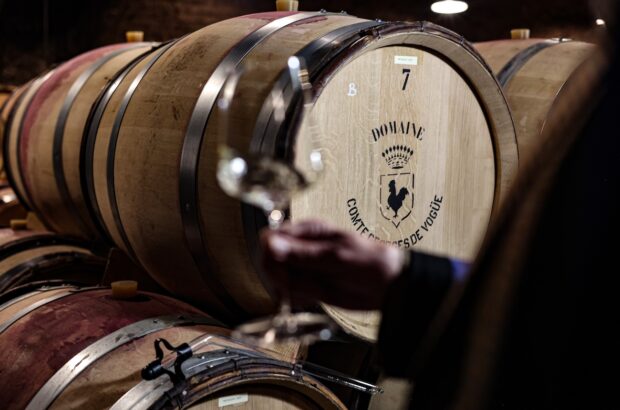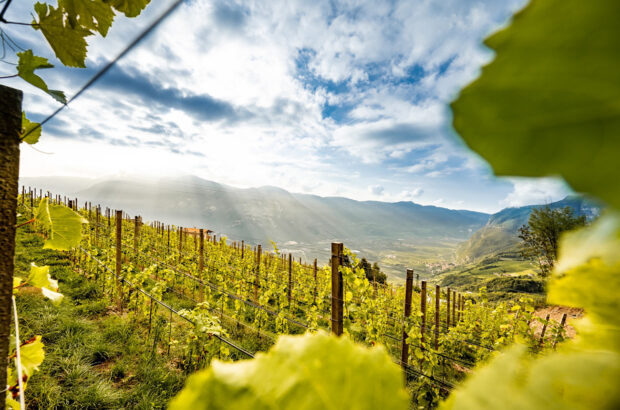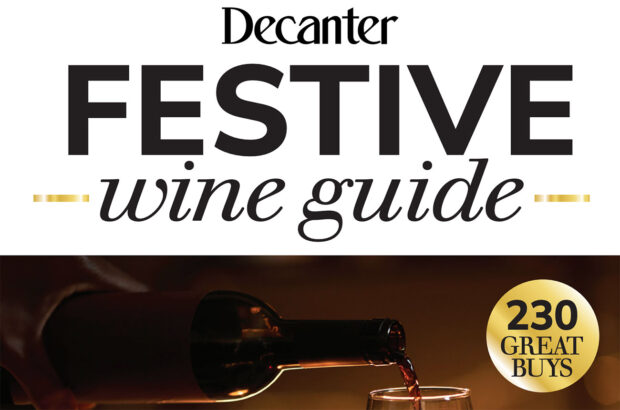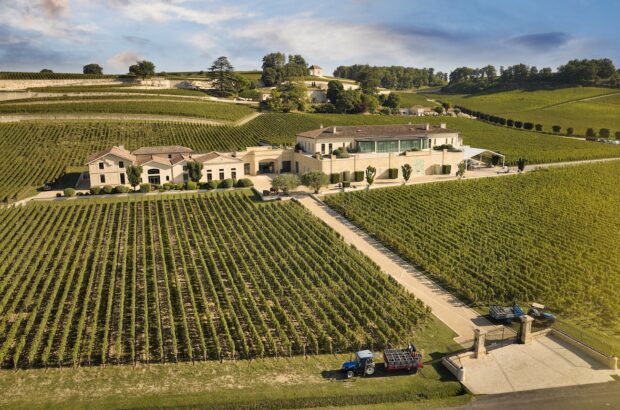It’s a wine lover’s dream. Oltrepò Pavese, in southern Lombardy, has a fascinating hilly landscape, a mosaic of vineyards contoured by woodland, a sprinkling of castles and stone villages, and an intriguing variety of wineries making diverse wines. Pretty much undiscovered by tourism, it’s home to some of Italy’s most highly regarded Riesling and Pinot Nero (the latter in versions ranging from bone-dry DOCG spumante to riserva) alongside enticing local varieties such as the vibrant, juicy red Croatina.
The signs are there: Oltrepò Pavese is on the so-called ‘45th parallel’ (the imaginary line halfway between the equator and the North Pole that also includes Bordeaux, the northern Rhône and Piedmont) and on the map the area even resembles a bunch of grapes. This wedge of land is bordered by Piedmont, Liguria and Emilia Romagna, and takes influences from each. It starts on the plains south of the Po river (Oltrepò Pavese means ‘Pavia’s lands beyond the Po’) and stretches southwards, rising up to a lofty 1,725m above sea level.
The Oltrepò hills enjoy regular breezes – essential for protecting delicate Pinot Nero grapes from humidity – and considerable day-night temperature swings which help to develop the elegant aromas that winemakers strive for. According to regional figures, there are about 3,000ha of Pinot Nero planted, and production of this variety in Oltrepò Pavese represents 75% of Italy’s national output.

Credit: JP Map Graphics Ltd
Family background
Pinot Nero was first planted here in the mid-19th century by Conte Vistarino, great-great-grandfather of the eponymous estate’s current owner Ottavia, one of many dynamic younger-generation producers now running Oltrepò wineries. She recognises the importance of her 300ha of woodland with its richness of biodiversity. Investments at the vast 826ha estate (102ha under vine), east of Montalto Pavese, include eco-friendly cellar technology and downsized wine production focusing on quality. Traditional-method/metodo classico sparkling expressions have always taken centre-stage here, and in addition to sparkling wines such as the lemon-fresh, 60 month matured 100% Pinot Nero 1865, the estate produces a wide range of still wines including three Pinot Nero riserva crus (among them the DWWA 2024 Silver medal-winner Pernice 2020) and expressive Riesling from vines on chalky terrain.
The great variety of soils is key to the quality and character of Oltrepò wines. Even on small estates, winemakers are able to select grapes from vines planted on clay, sand, chalk or gravel-based soils on north- or south-facing plots. ‘We have lots of fun here,’ confirms Giulio Fiamberti with characteristic enthusiasm.

Entertaining tours await at the historic family winery of Giulio Fiamberti in Canneto Pavese, near Broni
His tours are fun, too, with barrel tastings and impromptu blends. Fiamberti’s family has been producing wine for more than 200 years in the picturesque hills of Canneto Pavese, where slopes can be challengingly steep. This spot is home to Buttafuoco DOC – a rich, spicy, fruit-filled red made principally with Croatina and Barbera, plus Uva Rara and Vespolina (locally known as Ughetta) – and the still, frizzante and spumante Sangue di Giuda DOC sweet reds from the same varieties. The Buttafuoco Storico association, created in 1996 to uphold classic versions of Buttafuoco, such as Fiamberti’s Vigna Solenga, has a self-imposed protocol calling for three-year ageing and single-vineyard field blends of the traditional grapes.
Innovative thinking
At the eastern edge of Oltrepò Pavese, Alessio Brandolini was the first to produce metodo classico sparkling Pinot Nero at his family winery near San Damiano al Colle, making deliciously versatile rosé and white versions. As Brandolini explains: ‘Throughout Oltrepò Pavese, spumante is made with very low, or no, dosage as our wines have so much natural structure we simply don’t need the sugar.’ He is currently experimenting with ‘perpetual reserve’ solera-system spumante, as well as making intensely fragrant Croatina. Nearby, at Santa Maria della Versa, the Calatroni winery offers weekend lunches with estate wines (the Riva Rinetti Pas Dosé 2018 won a Silver at this year’s DWWA), and activities that include cookery classes and vineyard treks.
Another winemaker passionate about experimenting is Roberto Gerbino of Le Fracce, situated further west near Casteggio, an important wine centre since ancient times, with a high concentration of historic wineries in striking locations. Featuring an elegant residence originally built as a convent in the 17th century, the estate is run by a foundation created by its late owner to promote research and knowledge in wine production and art. There’s a gallery of ‘outsider art’, and remarkable collections of vintage cars and carriages. In the vineyards, Gerbino is implementing the results of a major project into water stress management. His wines include a refined Zero Dosage Pinot Nero, and reds combining Pinot Nero with Croatina and Barbera.
Micro-vinifications are the order of the day both at Le Fracce and at neighbouring winery Tenuta Mazzolino, where 39 plots have been identified over the 20ha of vineyards surrounding a charming villa and garden. Owner Francesca Seralvo took over from her grandfather 10 years ago and benefits from the long-term consultancy of leading Burgundy winemaker Kyriakos Kynigopoulos for wines that include sublime Chardonnay and Pinot Nero.
My perfect day in Oltrepò Pavese
Morning
Start the day with a swim in the salt-water biopool overlooking vines at Prime Alture. After breakfast on the terrace or in the light-filled restaurant, it’s just a 10-minute drive to Tenuta Frecciarossa. Meet the owners and stroll through the estate accompanied by their good-natured dogs. See farm animals and a great variety of plant life as well as the vines.
Lunch & afternoon
Stay for lunch at the delightful farmhouse, perhaps risotto with home-grown vegetables, paired with the estate’s metodo classico Riesling. Head south into the hills, stopping to enjoy views over the stunning Tenuta Travaglino estate from its Big Bench viewpoint, continue past Montalto Pavese and its hilltop castle before reaching Rocca de’ Giorgi. Here at Tenuta Conte Vistarino, where the area’s first Pinot Nero was planted, dive into the heritage of Oltrepò Pavese and taste different renditions of the Pinot Nero grape.

Tenuta Conte Vistarino. Credit: Alessandro Castiglioni
Evening
Taking a 20-minute drive north to Canneto Pavese, stop first at Casa del Buttafuoco Storico wine bar for a tasting of traditional Buttafuoco wines, then for dinner at Ristorante Bazzini. Try typical braised beef-filled ravioli and cheeses from Il Boscasso here, with wine from the long list of exclusively Oltrepò Pavese labels. End the day back at Prime Alture, where you can open a bottle from the in-room wine fridge and enjoy the night air on the patio.
Holiday vibes
Pinot Nero is the undisputed sovereign among Oltrepò Pavese grape varieties and while most producers make a range of different styles, Ballabio, founded in 1905, makes nothing but metodo classico, with fantastic results. Its range takes the name Farfalla (‘butterfly’) in reference to the shape of its most prestigious plot. Pinot Nero dominates the 20ha under vine at Ballabio’s neighbour, century-old Tenuta Frecciarossa, where the atmosphere is of a bucolic idyll. Cattle, chickens and bees contribute to the biodiversity. Owner Valeria Radici-Odero aims for sustainability and, as far as possible, self-sufficiency, using home-produced flour, fruit and vegetables at the estate restaurant.
Also with restaurant and rooms, the stylish Prime Alture wine resort is run with brio by Roberto Lechiancole, an aerospace entrepreneur from Milan who had no idea of the beauty of Oltrepò Pavese until flying over by helicopter seeking a countryside property to buy elsewhere. Vines surround the resort and Lechiancole lives above the winery. ‘I feel like I’m permanently on holiday,’ he jokes, radiating his intense love for the place. Nearby in Calvignano village, Tenuta Travaglino is an extraordinary place, where fallow deer roam the park and wine cellars can be found in a 12th-century monastery owned by the same family since 1868. Riesling Renano – rather than the less complex Riesling Italico – was introduced in the 1970s and shows its ageworthiness in wines such as the Campo della Fojada riserva.
Nature & nurture
While the vines stop at about 600m, it is well worth venturing further into the hills for more spectacular panoramas and villages such as Zavattarello, dominated by the imposing Castello dal Verme. There’s lots for walkers and cyclists here and throughout Oltrepò, and nearby at Valverde there is a nature reserve boasting an exceptional diversity of butterflies. About 12km south is the attractive stone-built centre of Varzi, a village celebrated for its fragrant salami made with superior cuts of pork and garlic soaked in red wine. Most wineries offer some with tastings, while the dedicated Che Salame! festival takes place here each June.
Spring and autumn are ideal times for visiting Oltrepò Pavese. With tastings, tours and events, the Oltrepò Festival is held in May, while in early October (5-7th this year) Pinot Nero in all its versions is celebrated with an international event, and local food and wine is showcased at Autunno Pavese (4-7th) in Pavia.
How to get there
Oltrepò Pavese is about 60km south of Milan Linate airport, 80km north of Genoa, or an hour’s drive from each.
Your Oltrepò Pavese address book
Accommodation
Borgo dei Gatti
Accommodation is in a selection of beautifully restored houses in the lovely village of Golferenzo. Breakfast is brought to your door, and there’s a spa as well as an excellent restaurant, wine bar and pizzeria.
La Locanda Calvignano
Five simple rooms decorated with a light contemporary touch, with inspiring views and a restaurant serving traditional dishes. On the main road west of Montalto Pavese, it’s owned by the Tenuta Travaglino estate, an easy 10-minute walk away.
Prime Alture
This welcoming, quietly refined winery resort in the countryside south of Casteggio has six spacious rooms, each with a wine fridge and coffee machine. There is an open-air saltwater pool, wellness area and restaurant with floor-to-ceiling windows and panoramic terrace. primealture.it
Restaurants
All’Avamposto
Enjoy a meal over the majestic river Po with delightful views from the cabin-style interior or terrace of this informal restaurant in Portalbera. Daily dishes might include perch-filled pasta and local charcuterie. Boat trips with lunch are also organised.
Borgo Santuletta
A dizzying array of vintage furnishings and decor characterise this agriturismo with bedrooms, a pool and picturesque farmyard in Santa Giuletta. The fixed-menu meals, which are paired with impressive estate wines, incorporate home-produced vegetables and eggs.
Frecciarossa
An enchanting farmhouse location at Tronconero with courtyard tables, gorgeous interiors, and dishes made with estate sourced vegetables, flour and eggs all make this winery ideal for a weekend lunch. Simple accommodation is also available.
Things to do
Cheese at Il Boscasso
In Ruino, visit the herd of 50-plus alpine goats and buy award-winning goat cheeses, including saffron-flavoured and blue cheeses (call in advance). Better still, book for Sunday lunch to enjoy cheese-based dishes with local wines.

Goat’s cheese at Il Boscasso, Ruino
Village to village
The area’s many charming villages include Zavattarello, dominated by the impressive medieval Dal Verme castle and Varzi, famed for its prestige DOP salami and the starting point of the 90km Via del Sale walking trail south to Portofino.
Wine tasting
For tastings and purchases of Oltrepò Pavese wines, or just to enjoy a glass, visit Enoteca Regionale della Lombardia just 4km southwest of Broni and Casa del Buttafuoco Storico in Vigalone, southeast of Broni. Both have wine bars serving traditional snacks and lunches.












